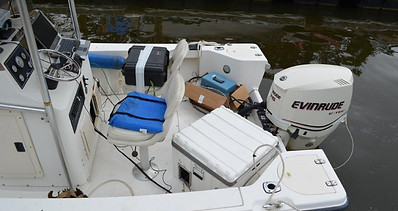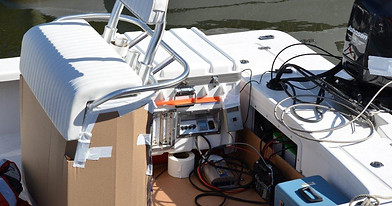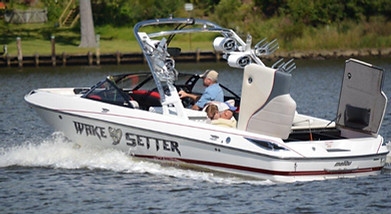
Marine Biobutanol Research
The recreational marine industry conducted five years of comprehensive testing to understand how biobutanol fuel blends work in marine engines and boats. Working under the direction of the US Department of Energy, Argonne National Laboratory, and with participation from the US Coast Guard, ABYC, NMMA, and collaboration across the marine industry, biobutanol fuel blends up to 16.1 percent by volume were approved as a boat-friendly fuel.
On-Water Testing

Boats were instrumented and tested over several boating seasons to determine the impacts of biobutanol fuel blends on engines, fuel system components, exhaust emissions, and overall boat/engine performance. Portable emissions sampling equipment developed specifically by BRP Evinrude and the marine industry was used to quantify emissions from a variety of boats.

Conventional carbureted two-stroke engines, such as this 1999 Johnson 150HP were included in the test program to ensure different engine technologies were compatible with biobutanol.



Laboratory Testing
Marine engines were tested for their full useful life through endurance testing running on 16.1 volume percent biobutanol fuel. Engines were then torn-down and all critical components inspected for wear.


Engine dynamometer performance testing laboratory meeting US EPA part 1065 standards. Detailed tests included crank-based combustion analysis, particulate matter emissions, exhaust gas emissions, fuel economy, corrected power and torque, among other tests.

